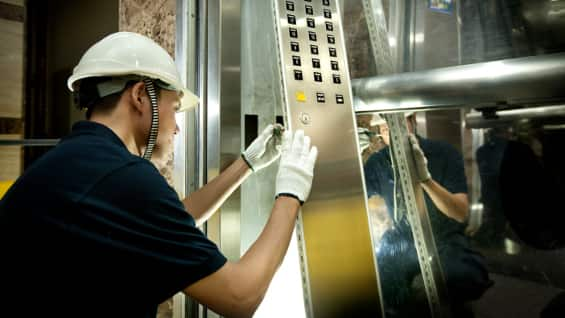
High-rise buildings are a common sight in urban landscapes around the world. With the increasing number of tall structures, the need for efficient and safe vertical transportation systems has never been more critical. Elevators play a crucial role in high-rise buildings, providing a convenient and reliable means of moving people and goods from one floor to another.
The Importance of Elevator Modernization
Enhanced Safety
- Upgrade to comply with current safety codes and regulations
- Improve emergency communication systems
- Enhance door operation and sensors for increased passenger safety
Improved Performance
- Enhance speed and efficiency with modern control systems
- Reduce wait times and increase handling capacity
- Integrate destination dispatch technology for optimized passenger flow
Key Considerations for Elevator Modernization
Tailored Solutions
Every high-rise building is unique, and elevator modernization solutions should be customized to meet the specific needs of each property. Factors to consider include:
- Building height and number of floors
- Traffic patterns and peak usage times
- Existing elevator system and infrastructure
Budget and ROI
Investing in elevator modernization is a significant decision for building owners and managers. It is essential to evaluate the costs involved and the potential return on investment. Considerations include:
- Initial modernization costs
- Energy efficiency and operational cost savings
- Increased property value and tenant satisfaction
Disruption and Downtime
High-rise buildings have a constant flow of occupants and visitors, making elevator downtime a major inconvenience. When planning modernization projects, minimizing disruption to building operations is crucial. Strategies to reduce downtime include:
- Scheduling modernization work during off-peak hours
- Implementing temporary elevator solutions
- Providing clear communication to building occupants
Technological Advancements in Elevator Modernization
Destination Dispatch Systems
Destination dispatch technology revolutionizes the way passengers experience elevators in high-rise buildings. By grouping passengers with similar destinations, these systems optimize travel time and efficiency.
IoT Integration
The Internet of Things (IoT) has made it possible to connect elevator systems to centralized monitoring platforms. This connectivity allows for real-time monitoring, predictive maintenance, and performance optimization.
Energy-Efficient Solutions
Energy consumption is a significant consideration for high-rise buildings. Modern elevator systems are designed to be energy-efficient, using regenerative drives, LED lighting, and power-saving modes to reduce operational costs.
Benefits of Elevator Modernization
Enhanced Safety
- Compliance with safety codes and regulations
- Improved emergency response and communication
- Enhanced door operation for passenger safety
Improved Performance
- Efficient handling capacity and reduced wait times
- Enhanced speed and operational efficiency
- Optimized passenger flow with destination dispatch
Enhanced User Experience
- Smooth and comfortable ride experience
- Reduced crowding and wait times
- Intuitive and user-friendly interface
Conclusion
Elevator modernization is a critical investment for high-rise buildings seeking to maximize safety, performance, and efficiency. By choosing tailored solutions, leveraging technological advancements, and prioritizing safety, building owners and managers can enhance the vertical transportation experience for occupants and visitors. With careful planning and implementation, elevator modernization projects can deliver long-term benefits and a positive return on investment.